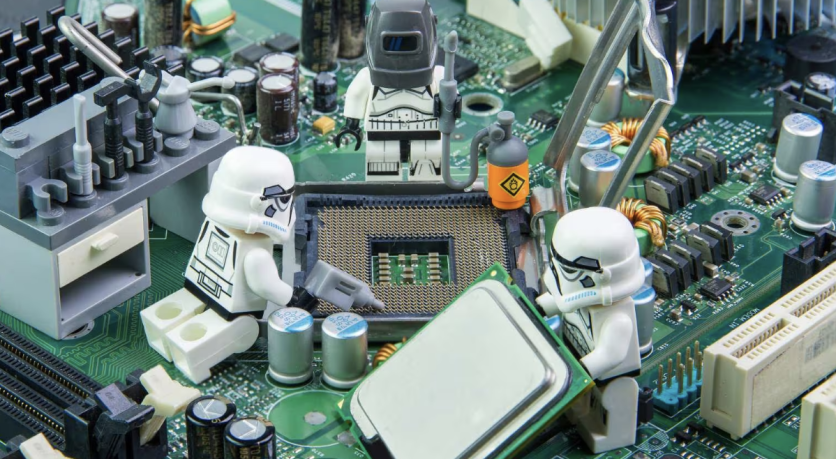Australian researchers introduced a compact silicon chip merging electronics with photonic components, offering potential advancements in radio-frequency bandwidth and information control.

Debuting Lego-Style Chip
The University of Sydney Nano Institute researchers have unveiled a compact silicon semiconductor chip that seamlessly merges electronics with photonic components.
Interesting Engineering reported that this breakthrough holds the potential to significantly enhance radio-frequency (RF) bandwidth and precise control of information circulation within the chip.
Leveraging state-of-the-art silicon photonics technology, the chip offers integration capabilities for various semiconductor systems within a width of less than 5 millimeters.
Professor Ben Eggleton, the Pro-Vice-Chancellor (Research), likened the process to assembling Lego building blocks, emphasizing the incorporation of new materials through advanced packaging of electronic 'chiplets.'
While the concept of Lego-style components in chips is not entirely novel, with MIT researchers unveiling a reconfigurable AI chip in 2022, this innovation represents a notable stride in advancing integration capabilities and functionality within a compact chip design.
Dr. Alvaro Casas Bedoya, the Associate Director for Photonic Integration in the School of Physics, highlights that the team's decade-long effort in developing the heterogeneous materials integration method has led to the creation of this groundbreaking chip.
He emphasized the significance of combining overseas semiconductor foundries for basic chip production with local research infrastructure and manufacturing. According to Bedoya, this approach is crucial for the development of the photonic integrated circuit.
The innovative architecture of the chip holds the potential for Australia to establish its own sovereign chip manufacturing capabilities, reducing dependence on international foundries for value-added processes.
Strategically Positioning Australia
Considering that many technologies on the Australian government's List of Critical Technologies in the National Interest heavily rely on semiconductors, the introduction of this new chip strategically positions Australia.
The research at Sydney Nano aligns with initiatives like the Semiconductor Sector Service Bureau (S3B), sponsored by the NSW government.
Dr. Nadia Court, the Director of S3B, expressed the alignment of their mission with the groundbreaking work in semiconductor technology, emphasizing the significant potential for future innovation in Australia's semiconductor landscape.
This achievement reinforces the local strength in research and design, particularly amid the current global focus and increased investment in the sector.
Collaborating with scientists at the Australian National University, the integrated circuit was developed and constructed at the Core Research Facility cleanroom within the University of Sydney Nanoscience Hub-an advanced $150 million facility equipped with cutting-edge lithography and deposition capabilities.
The photonic circuit within the chip boasts an impressive 15 gigahertz bandwidth of tunable frequencies, achieving a remarkable spectral resolution down to just 37 megahertz-less than a quarter of one percent of the total bandwidth.
As posted in Nature Communications, the research team envisions that their chip could reshape microwave photonics and integrated photonics research, finding applications in advanced radar, satellite systems, wireless networks, and the upcoming 6G and 7G telecommunications.
Related Article : This New 3D Organ-on-a-Chip That Mimics Human Joint Could Accelerate Development of Treatments for Arthritis

ⓒ 2025 TECHTIMES.com All rights reserved. Do not reproduce without permission.




